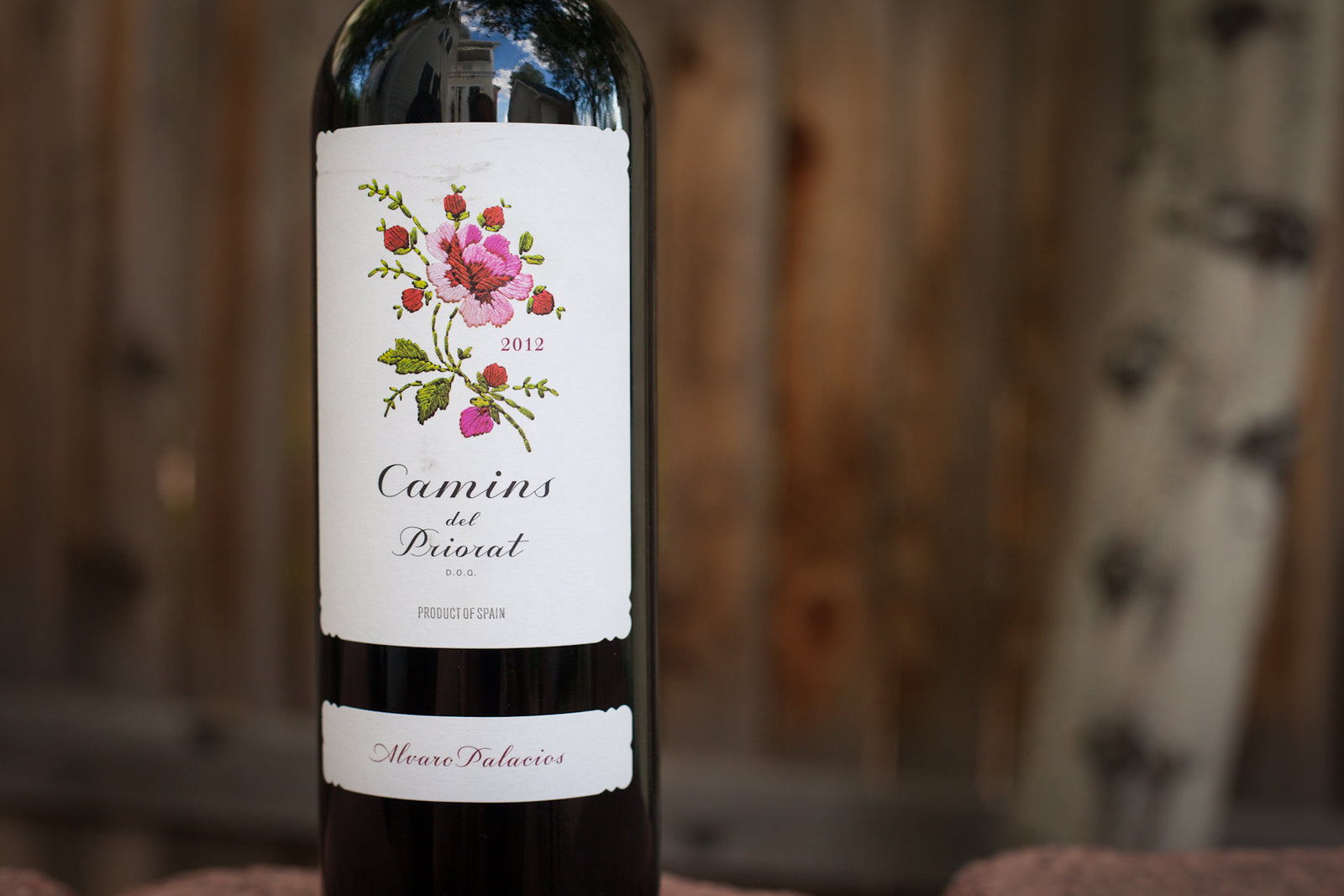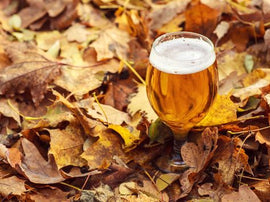When it’s time to choose the wines for our November wine club shipment, I draw on my organoleptic memories of my favorite Thanksgiving feasts and pick accordingly. Thanksgiving is one of my favorite holidays. We not only give thanks for all the wonderful bounty the world offers, and for the opportunity to reunite with friends and family, but it is a holiday that embraces the pairing of food and wine. While family dynamics can be trying at times, I like to have interesting wines on hand to steer the conversation away from being asked why I didn’t do this or that, or told maybe I should have done that instead of this. But when questions like that happen, I like to change the topic to wine, pontificating on the intricacies of growing wines in different areas, and marveling at the results. The flavors of these wines and the following information about the producers and their terroirs will give you plenty of material for engaging tableside conversation. Have a delicious holiday season and bon appetite!
El Vinculo Alejairén Airen 2014 - La Mancha, Spain
A family breadwinner from the age of 13, Alejandro Fernández has gone on to become one of the greats of modern Spanish viticulture and a pioneer in both the Ribera del Duero and with the Tempranillo grape. Pesquera was the first Estate he established and the one that launched his fame. From the humble beginnings of one solitary vineyard in 1972, Alejandro Fernández now has four wineries. Alejando’s wife Esperanza has been instrumental in building the company, and their four daughters, Lucía, Olga, Mari Cruz, and Eva manage the business, with Eva, who trained as a winemaker in Spain and France, overseeing the winemaking.
In the 70’s, beet and cereal crops were far more profitable than wine in Ribera. Alejandro started to make a living selling and later manufacturing beet harvesters. His small business, together with various patents, provided the financial backbone to allow him to follow his passion and launch his wine venture. Fernández and his family now own a small red wine empire which includes 270 hectares of vines in and around Pesquera del Duero (Tinto Pesquera), 250 hectares for his second brand in Ribera del Duero (Condado de Haza), 130 hectares in Zamora (Dehesa La Granja), and El Vínculo, in La Mancha, which sources its grapes from local growers.
While on vacation to visit La Mancha’s emblematic windmills that inspired Cervantes to write Don Quixote, Alejandro was surprised to discover 100-year-old, head-pruned Tempranillo (aka Cencibel) vines amidst a sea of white Airén grapes. Convinced he must undertake one last bodega in the historic village of Campo de Criptana in La Mancha, El Vínculo was born. By signing long-term leases with the town’s three best grape growers, and carefully controlling both the yield (50% of fruit is dropped each year) and harvest time (his grapes are harvested two weeks on average after the rest), Alejandro ensured that both the Airén and Tempranillo grapes he had discovered in La Mancha could result in wines that achieve his standards of excellence. El Vinculo has become the leading winery of the region and became the first benchmark Estate of central Spain.
Once Alejandro and his daughter Eva had perfected the red wine process at El Vinculo they decided to turn their attention to making a white wine from a very special yet almost forgotten variety–Airen. The first vintage released on the market was 2007, made from grapes harvested from the Paraje la Golosa vineyard which is planted with hundred-year-old vines on sandy soils. The vineyards are tended by local viticulturists and are located at 650-750 meters above sea-level in semi-level, south-facing soils which descend from north to south. The only white wine made by the Fernández family, Alejairén draws its name from the combination of its creator Alejandro and its grape variety Airén. Alcoholic fermentation takes place in stainless steel vats between 6-10 days at an average temperature of 20-25° C. The finished Alejairén is then aged for 24 months in fine grain, 225-and 300-liter neutral American oak barrels with a light-to-medium toast, making it one of the only barrel-aged whites in the region. With the Fernández family dedicated to natural wine-making, all wines produced by Alejandro Fernández are neither filtered nor fined before bottling.
Put the wine in your mouth, and citrus fruit flavors, elegant sweet spices, and floral honey notes live together in a lively and powerful harmony, bursting and dancing on the palate with both strength and finesse. It is dry and minerally, somewhat sour and salty, but also gorgeously oily, with a burst of tropical mango and ripe pineapple flavors from the mid-palate on. The robust body and complex aromas and flavors of this wine makes me want to marry it with a substantial meal. A roast turkey or chicken, grilled meats, maybe accompanied by ratatouille, or oven-roasted root vegetables seem appropriate with this wine. It works equally well with well-chosen cheese (hard or soft /simple or decadent), some walnuts (fresh from the shell if handy) and a simple tossed salad. The 2014 El Vinculo “Alejairén” is $24.00/bottle, $259.20/case.
Bodega L'Ermita Camins del Priorat 2017 - Priorat, Spain
Situated in the south of Catalonia, in the Province of Tarragona, along Spain’s northeast Mediterranean Coast, lies the Spanish wine region of Priorat. The vineyards there are planted on the breathtakingly-steep slopes of craggy hills about 100 miles southwest of Barcelona. What immediately distinguishes Priorat from other grape-growing regions in the world is its amazing, granite-like soils, known to the Catalan people as llicorella and to the rest of Spain as pizarra. The llicorella soil resembles slate or shale rock, intermixed with tiny bands of reddish-brown earth. Rather easy to break apart by hand in one direction, but virtually indestructible in another, this rock forces the roots of vines to dig very deep in search of water, and is credited for the intensity and mineral character of the wines. Priorat is extremely arid and receives hardly any rain during the summer months. Irrigation is rarely used, as water is scarce, and is typically saved for the youngest vines and the hottest years. The Estatuto del Vino (wine laws) issued by the Spanish Ministry of Agriculture in 1932 established the Priorat region as a place capable of producing world class wines and recognized it as a land to protect. However, the political and social situation of Spain during the 1930s wasn't the best: there was a Civil War going on and Priorat, on the Republican side, was being neglected. In 1954, when the Civil War was over, Priorat was given official DO status. In 2000, the Catalan government decreed that the DO Priorat should be raised to DOCa (qualified designation of origin) status because of the uniqueness and quality of their wines. The only other DOCa in Spain is Rioja. Garnacha and Cariñena are the principal red varietals, but Cabernet Sauvignon, Merlot, and Syrah are allowed. The best red wines are dominated by Garnacha, or blended with Spanish and French varietals, and subject to varying methods of French barrique treatment. Crianza wines aged in oak for 6 months and then 18 months in bottle. Reserva wines aged in oak for 12 months and then 24 months in bottle. Gran Reserva wines aged in oak for 24 months and then 36 months in bottle.
Alvaro Palacios is the scion of a winemaking family, one of nine children, with a heritage in Rioja stretching back 350 years. He set out to study in Bordeaux, but before long he dropped out and found a job with the Moueix family at Pétrus. In addition to his properties in Priorat, he runs the famed family bodega, Palacios Remondo, in Rioja, and he has set himself up in another formerly forgotten region, Bierzo in the north-west of Spain, with his nephew Ricardo.
In 1989, at the age of 25, together with respected winemaker René Barbier and a few others, Alvaro ventured on what has been called the “Gratallops Project”, named after the scenic Priorat village where the wines are made. The group bought the vineyards together and shared vinification facilities until they each set up their own estates. Alvaro bought his first property there at Finca Dofi and three years later purchased a small parcel of vines, 1.7 hectares at L'Ermita, a north-east-facing slope of well-drained schist where he made the complex and concentrated wines that really established his reputation worldwide.
Alvaro had never wanted to be known solely for expensive “trophy” wines, and with Camins del Priorat, he found the opportunity to create something special. Camins del Priorat is Alvaro’s wine from the L'Ermita bodega, in which Cariñena and Garnacha dominate and Cabernet Sauvignon and Syrah are added as seasoning. The 2017 Camins del Priorat consists of 40% Garnacha, 30% Samsó (aka Carignan), 20% Cabernet Sauvignon, and 10% Syrah. Once harvested the grapes are destemmed and softly crushed, followed by a 30-day maceration. Fermentation takes place in a mix of stainless steel, cement, and open-top wooden vats for 30 days with punch-downs and/or pump-overs. The wine is then aged for 8 months in used barrels and wooden vats. Drawing on his wealth of vineyard sources in and around the village of Gratallops, Alvaro produces a wine that is affordably priced, but which also stays true to his vision of Priorat—powerful but elegant, approachable but restrained. The 2017 Camins del Priorat elegantly coats the palate with flavors of red fruits, spices, and gentle oak, along with hints of earth and minerals. Beautifully balanced with refreshing acidity and soft tannins, the wine has a long, fruity finish. Local dishes such as butifarra sausages (a plump white sausage made from pork, garlic, and spices), fricandó (a hearty veal and mushroom dish), and roasted vegetables served with the tangy romesco sauce pair wonderfully with this wine. The 2017 Carmins del Priorat is $27.00/bottle, $291.60/case.





